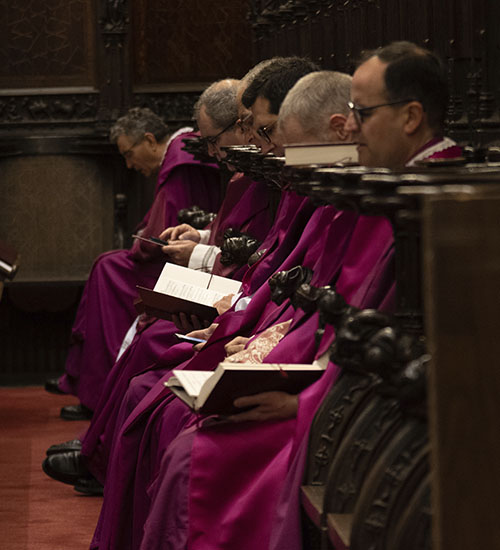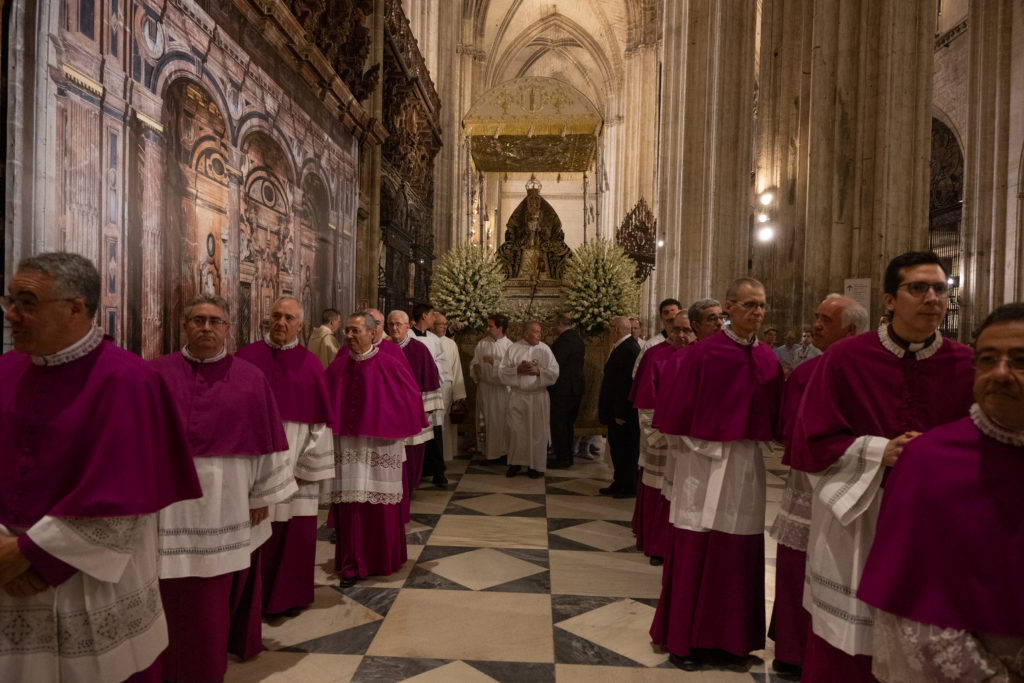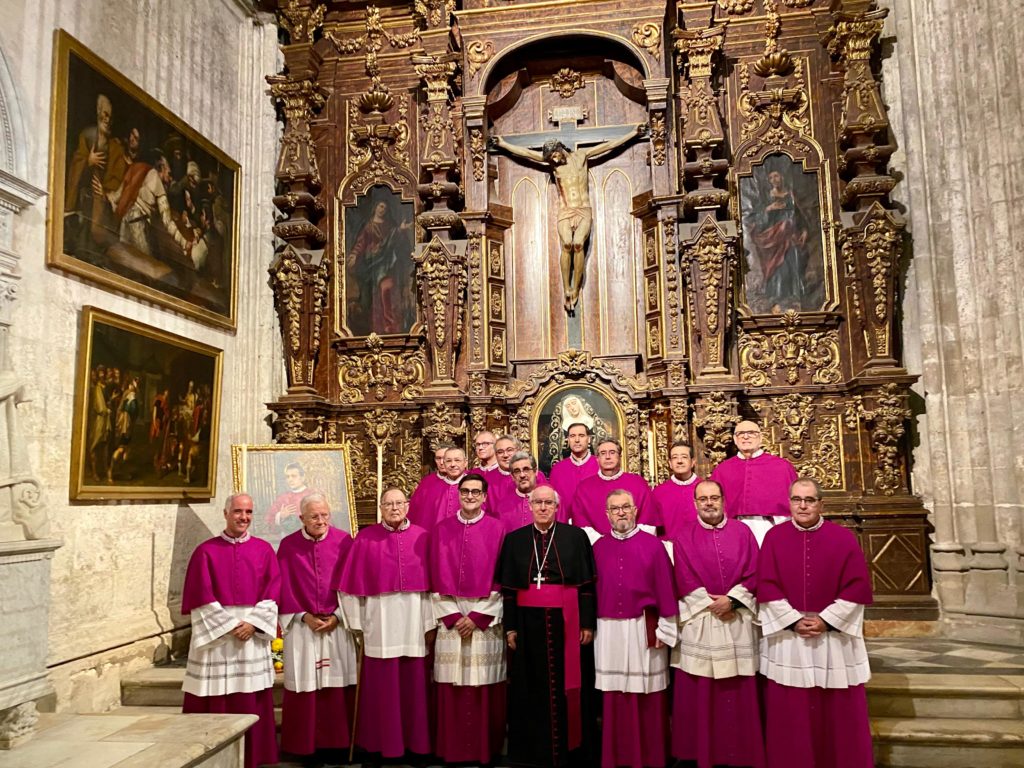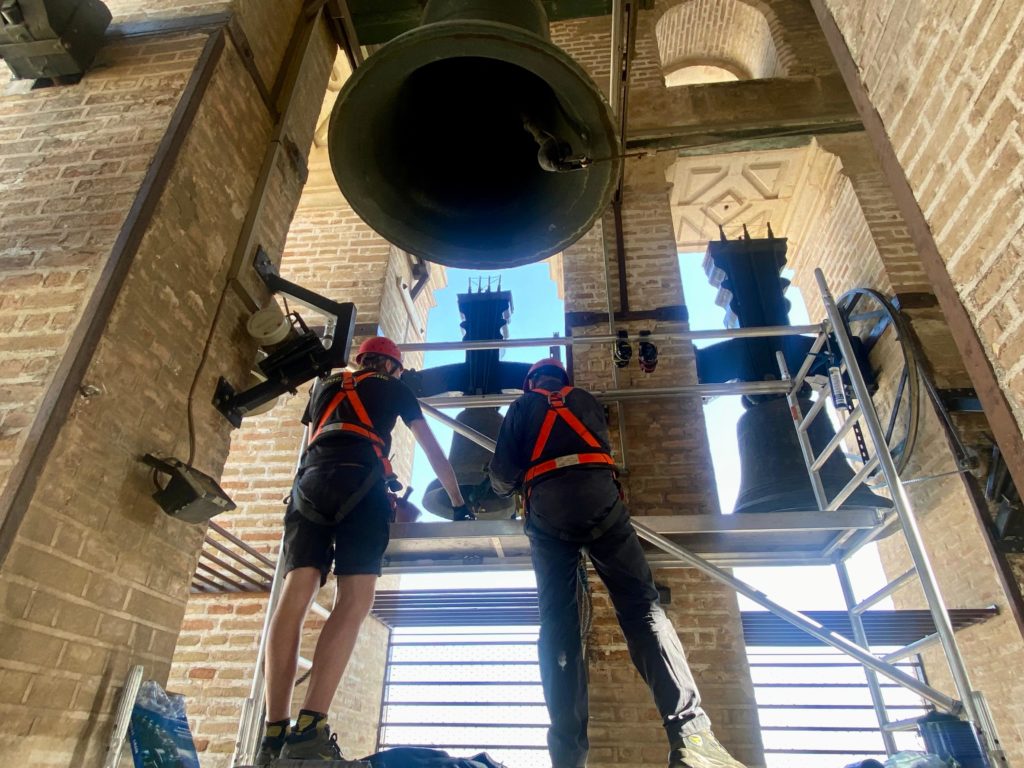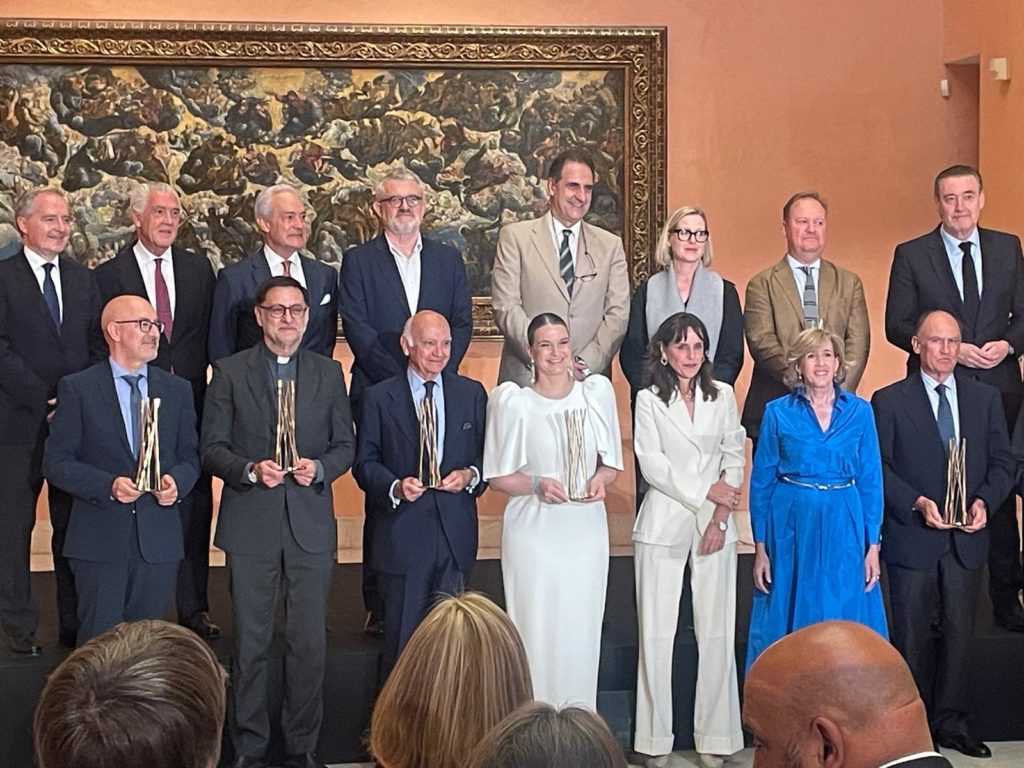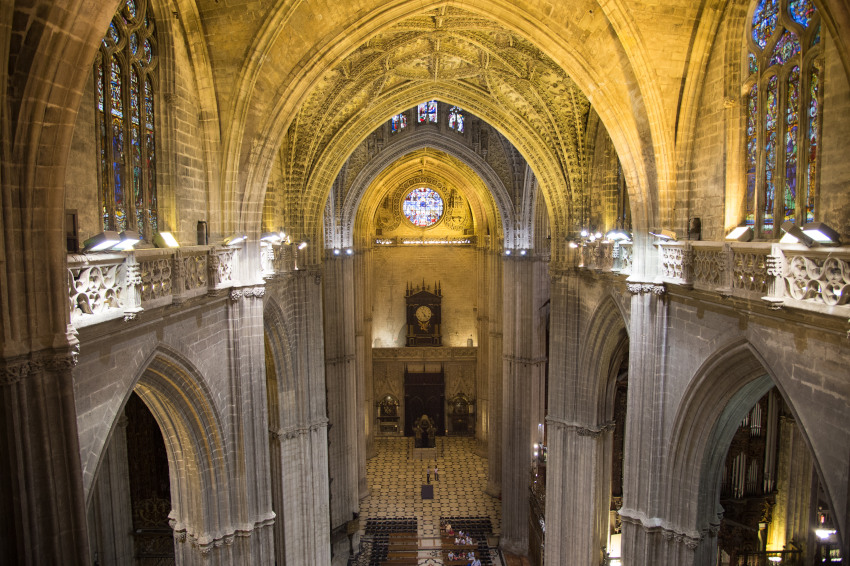The Cathedral of Seville was built in the 15th century and was, within the Spanish panorama, the great construction project of the century. As Professor Juan Manuel Medina refers to in his thesis: Natural light as a generator of the architectural space of the Gothic Cathedral, its construction was preceded by strong political interests that conditioned both its form and the very concept of the Cathedral. Until 1248, Seville had served as the last and most important bastion of Islam in Spain, with the exception of the Nasrid kingdom of Granada. The new episcopal see had to, without a doubt, explicitly demonstrate the supremacy of Christianity over the Muslim world, so the cathedral was built on the old mosque, Christianized in the reconquest of 1248, and the fusion of both architectures is evident in the definitive Gothic building.
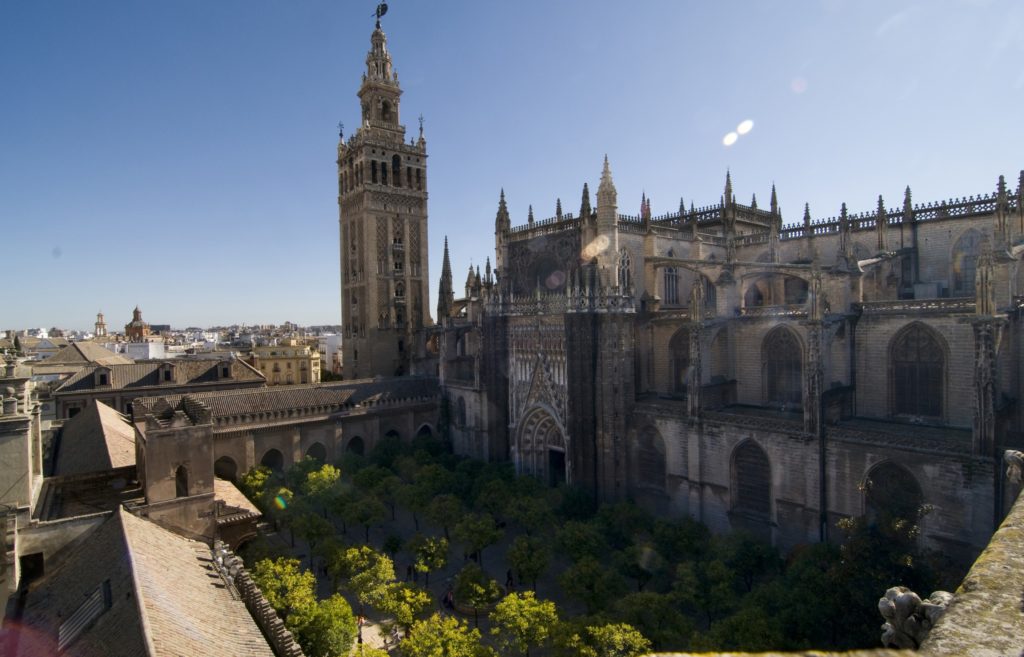
The Giralda, completed in 1198, and the Patio de los Naranjos (courtyard of the orange trees), both preserved but remodeled, are conserved from the old construction. But the form of the Cathedral of Seville does not only depend on its Muslim antecedents; this ambitious construction suffered the vicissitudes of being built in an area of seismic risk. This fact was definitive for the configuration of the building as the large closed box that it is, with a central nave with 36.38 meters of height with little difference with respect to the lateral ones, with “rich pillars in a bundle of small columns that support the high arcades and pass to the clerestory and vaults without the intermediate of a triforium”, but armed superiorly in the two directions of the space with an intense framework of walls, topped with an imposing scaffolding of flying buttresses, buttresses and pinnacles that “soften the whole with its great meticulousness” and with logical coincidences with the other seismic cathedrals of the Spanish panorama.
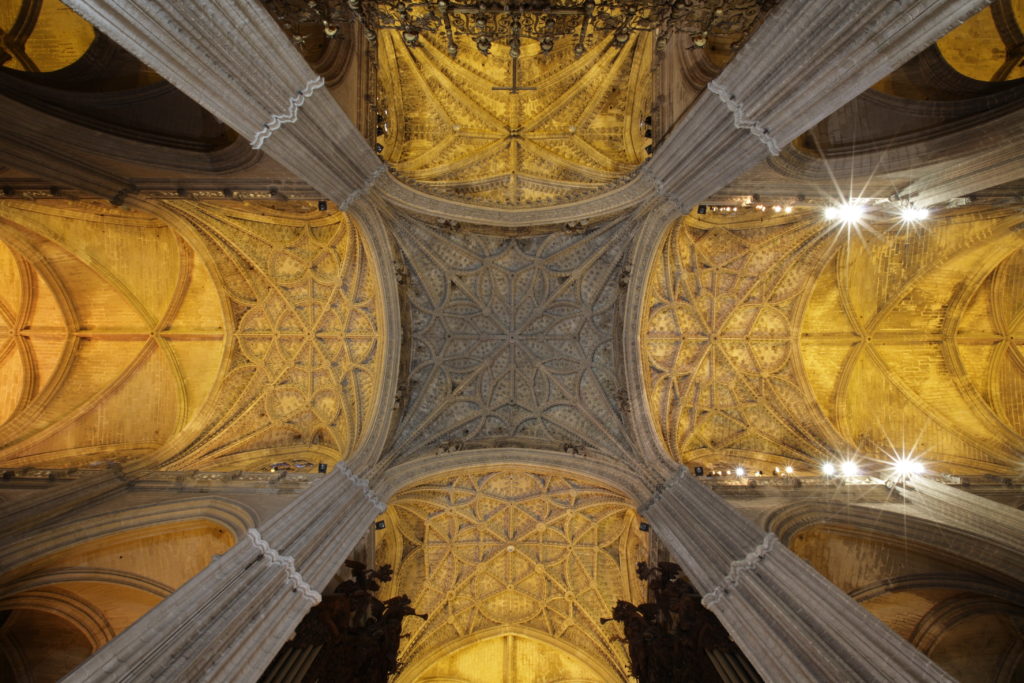
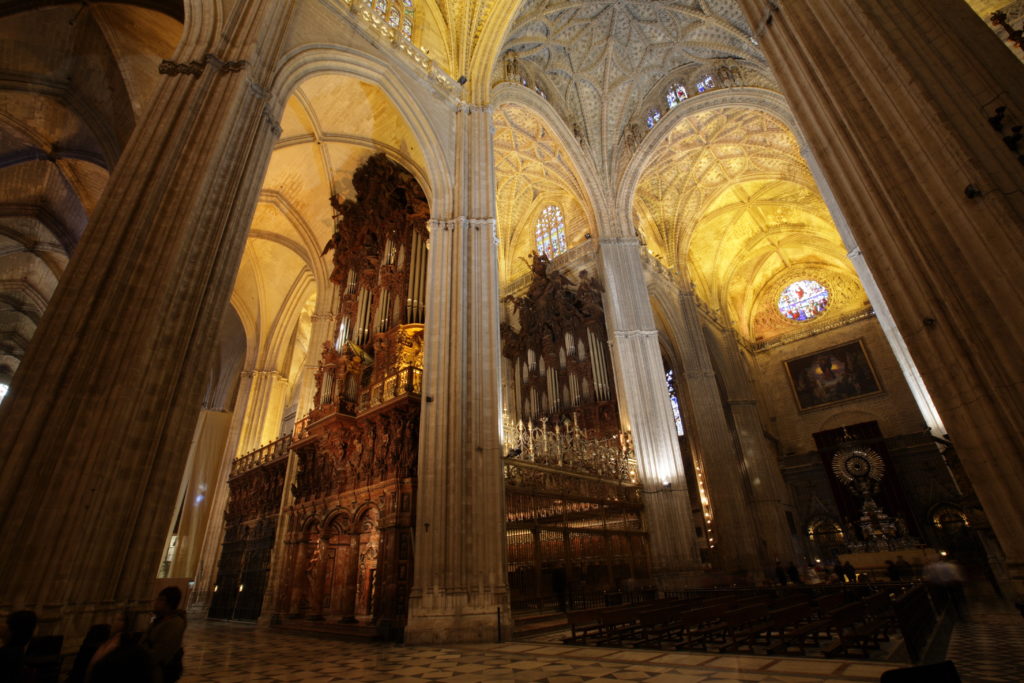
The origins of the construction of the building date back to 1401, when the chapter decided to build a unique building of its kind, and indeed, until its completion in 1519, the largest Gothic building in Christendom was erected. In 2008, the oldest plan of the cathedral was found in the Monastery of Bidaurreta de Oñate (Guipúzcoa).
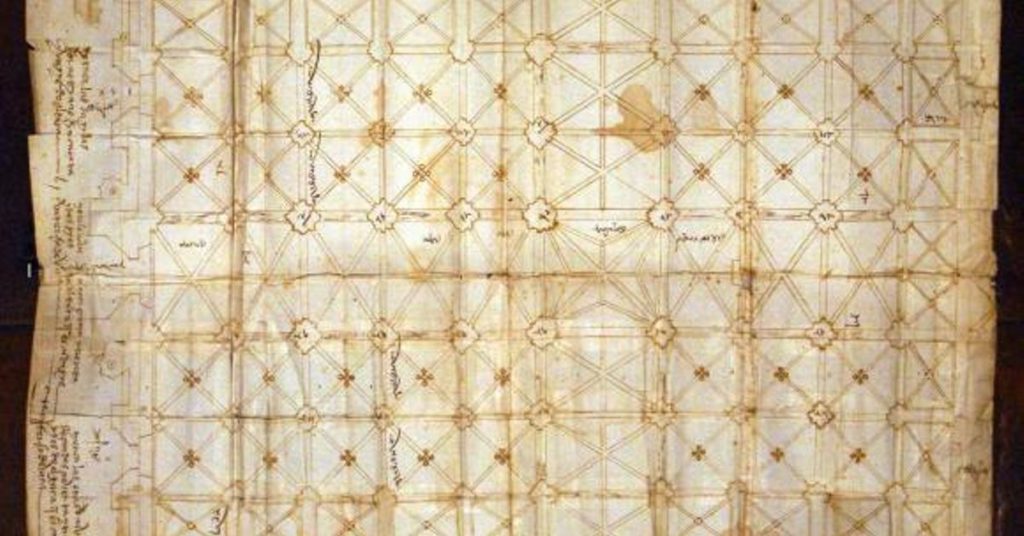
Regarding the masters who intervened in the construction of the cathedral, “It is not recorded in its archive who was the architect who designed this great work, because Felipe II took the plan or original design signed by the first master to Madrid in two skins”, but, as Fernando Cruz describes, there were many who were known as Isambert (1432), Carlin (1439), Juan Norman (until 1472), Pedro de Toledo, Francisco Rodríguez, Juan Hoces and the master Ximón, who could have been Simón Alonso, according to Cruz, or Simón de Colonia according to Borngaser, whom “we will find again in Burgos and who was in charge of designing the dome finished in 1506, which collapsed five years later”. In 1515, the prolific Juan Gil de Hontañón took charge of the flamboyant configuration of the sections of the final vault.
The Cathedral of Seville has a greater “representative” character than any other building of the Late Iberian Middle Ages. Built on the foundations of the mosque, it takes up its spatial disposition, elevating it to a Gothic elevation that clearly signals the triumph of Western architecture.
This feast of artistic vaults, stained glass windows, walls and iconographic and musical resources and other events born from the perfect synchrony between pastoral and cultural activity and architectural majesty, describe scenes from a history that never ceases to readapt.
The Metropolitan Chapter has been the custodian for more than seven centuries and continues to lead from a modern and organized management. To this end, it maintains the daily Liturgy and the celebration of the great festivities according to the liturgical agenda, permanently attends to the devotion to the Virgen de los Reyes, and carries out an incessant sacramental pastoral work as the first church of the Diocese of Seville. In addition, it follows a rigorous master plan for the maintenance and conservation of the building and its movable property.
